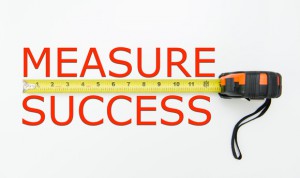
SaaS founders are obsessed with metrics. However, it is easy to get off-track measuring metrics that do not contribute to the bottom-line. Without in-depth insight on how your current users interact with your service, it will be difficult to achieve customer success. Tracking user interaction with your app may seem like a vanity task, especially when you are still generating revenues and acquiring new customers. But is this really the case?
Why You Need to Track User Interaction
Concentrating on customer acquisition and activations without giving thought to customer success is a flawed approach to SaaS. Let me explain why.
SaaS profitability is largely based on recurring payments from users. The cost of acquiring new customers (CAC) is usually higher than the cost of retaining them. However, success means retaining customers through to their lifetime value (LTV). Typically, the lifetime value will be the point where the needs of your users supersede what your product offers. The LTV can vary from industry to industry and should be maximized for optimal recurring revenues.
If majority of users are terminating their accounts without reaching the average LTV, then there is a problem with your product or service. While a percentage of churn is expected, higher churn rate will slow down your growth and negatively affect your revenues. Lowering churn should be at the center of your marketing.
You need to know why users are not reaching their expected LTV. If you are not tracking user interaction, you will not know what is causing churn. Most causes of churn are related to customer satisfaction. Here are a few examples:
- Customers get mixed up with packages. They have no way of upgrading or downgrading their package.
- Your product has bugs that customers cannot deal with.
- Your product does not deliver what you promised.
- Customers feel that they don’t get adequate support from your team with regards to using the app.
By tracking user interaction with your app, it will be easy to spot potential causes of churn and address them in time. For example, if usage metrics data show that customers don’t use a particular feature, find out why. Is the feature too difficult to learn? If so, provide learning resources. Host a webinar to highlight the feature, provide instruction notes or videos on your knowledge base, etc. Is the feature not being used because of a bug? Provide an easy way for user to provide feedback to your feature. Get your development team working on any bugs in your product, of course prioritizing.
You need to measure and improve metrics related to customer success. The most important metrics include:
Churn
The traditional way of measuring churn is to consider it as a percentage of overall customers and associated revenue lost. While this basic way of measuring churn is important, it does not provide deeper insight on characteristics of churn.
Not all churn is the same. Apart from a user out rightly canceling their subscription, churn can also occur in form of service downgrades or reduction of licenses within an account. Identifying the causes of these internal churn is crucial to improving customer success.
Source: http://www.gainsight.com
Product Usage Statistics
Measuring usage metrics is critical to understanding the value customers derive from your product. While you may think users buy from you because of its features, this is not true. All customers buy products because of the value derived from using them. If users are not logging into your product, they are not getting any value, which can lead to churn.
Other related product usage metrics to measure include time spent on application, business transaction density (i.e. searched conducted, quotes created, etc.), source of users and access mechanisms.
Revenue Per User
The goal of any product should be to enable the user derive as much value as possible from the app. You should measure the percentage of users who upgrade or take other premium add-ons.
A reduction in the uptake of premium offerings can mean a disconnect between the users and your offer. You will need to go under the hood to determine what may be causing friction, preventing users from taking additional offerings.
Customer Lifetime Value (CLV)
The CLV is an essential component to measure as it quantifies the present predicted value of a revenue stream from your users. Understanding the CLV will help you make prudent choices on how much to spend in customer acquisition.
To measure the CLV, simply total the recurring revenue and divide it by the churn rate.
Customer Lifetime Value=Total MRR/Churn
You can predict the CLV since its value depends on the ability to forecast future costs and revenues. When you get more insight on your customer behavior, you can devise more sophisticated CLV models to improve your forecast accuracy.
If you need to understand how LTV is calculated, this infographic can help you.

Source: How To Calculate Lifetime Value
Net Promoter Score (NPS)
This score measures the number of customers actively promoting your brand versus those providing negative sentiments. Made popular by this HBR article, the NPS has been successfully used by companies such as American Express , Southwest Airlines and Apple.
By measuring the NPS, you will have a good idea on how users perceive your products and company. A negative NPS will help you know how your different departments (support, marketing, sales, etc.) are performing. Your aim should be to achieve an NPS of +100 i.e. a point where all your customers are promoting your product.
Source: http://www.getambassador.com/
The five metrics outlined above are related in one way or the other to customer satisfaction. With a satisfied customer base, recurring revenues will continue being generated while the cost of acquiring new customers will decrease. This will have an overall positive impact on your company’s bottom line. Drilling down on the important SaaS metrics will give you insight on growing and ensuring the good health of your business.
Growing Your Customers
For SaaS, one of the major goals is to grow MRR month by month, However, as a founder, you also want to grow the number of customers you are signing up every month. To do this, you can focus on:
- Growth in funnel capacity
- Lead generation growth
- Improvement in the overall funnel conversion rate
To improve and sustain growth, you have to measure your current activities and look for ways of acquiring new users in a cost effective manner. Measuring will not only give you insight on the performance of your business, but also point areas in your operations that may be slowing down customer acquisition or revenue generation.
SaaS business can be optimized in a number of ways. The optimization methods should be guided towards achieving the core objective of growing revenues. To improve your growth, cash or profitability, you first have to measure the metrics that are important to customer success and watch them as they change over time.



